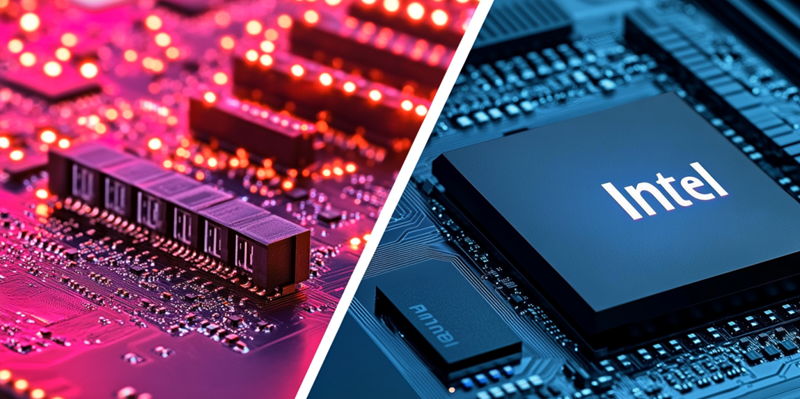Intel has recently found itself in the spotlight for less favorable reasons as their latest Core Ultra 200S CPUs, codenamed Arrow Lake, have not met the high gaming performance expectations set by the company. Initial benchmarks have shown that these CPUs fall short in gaming performance, despite promises of delivering top-tier experiences tailored to gamers. This discrepancy has led Intel to delve deep into potential root causes, suspecting multifactorial issues that extend across BIOS and OS levels.
Identifying the Issues
BIOS and OS Optimizations
In a revealing discussion with Hot Hardware, Robert Hallock, Intel’s Vice President and General Manager, made it clear that the gaming performance issues are being taken very seriously. Hallock acknowledged that the initial testing phase didn’t meet the gaming expectations held by both the brand and its audience. He pointed out that while general CPU tasks didn’t show any notable lag, the gaming benchmarks revealed a significant underperformance not anticipated by the developers. Key areas of focus include optimizations at the BIOS and OS levels, which can often impact performance in various ways.
The complexity of modern CPUs means that a variety of factors must be perfectly aligned to achieve optimal results. Intel’s engineering team is meticulously assessing every potential variable to ensure that any performance hindrance is addressed. Hallock hinted that although the primary issues remain undisclosed, a multi-faceted fix is underway. Users can expect a patch aimed at resolving these problems by the end of the month or early December. Such prompt actions demonstrate Intel’s commitment to maintaining their leadership in the gaming CPU market.
Structural Changes and Memory Latency
Simultaneous Multi-Threading (SMT) Design Choices
During the interview, Hallock also shed light on the design philosophies that shaped the Arrow Lake series. A significant departure from previous designs is the absence of Simultaneous Multi-Threading (SMT). This decision was made to counter several traditional drawbacks associated with SMT, such as higher production costs, increased power consumption, and potential security vulnerabilities. By excluding SMT, Intel aims to offer solid multi-threaded performance without these trade-offs, signifying a notable shift in how future cores may be developed.
Interestingly, while SMT has been bypassed, Hallock did not dismiss the importance of multi-threaded capabilities altogether. Instead, Intel seeks to refine single-thread and new multi-thread cores that can efficiently handle tasks without SMT. This strategic move indicates that Intel is rethinking its approach, aiming to innovate architectures that balance performance, cost, and security. While these alterations may have contributed to the current performance issues, they hint at a broader, long-term vision for Intel’s CPU roadmap.
Memory Latency Issues
Another aspect brought up was the issue of high memory latency reported by multiple reviewers. Although Hallock mentioned that memory latency is not the principal factor affecting gaming performance, it remains a critical focus area. Memory latency can impact various real-time applications, making its optimization essential for any high-performance CPU intended for gaming. By providing detailed analyses and improvements in this domain, Intel intends to assure users that they are committed to rectifying performance hiccups.
Memory latency challenges are not entirely uncommon but can be particularly detrimental in gaming contexts where real-time responsiveness is crucial. Engineering improvements often require fine-tuning of hardware-software interactions to minimize latency. As users demand swift and immersive experiences, Intel’s ongoing adjustments and upcoming detailed reports will likely provide reassurance to the gaming community.
Market Position and Competitive Landscape
Performance Enhancements and Competitive Edge
Despite the imminent fixes, broader questions loom over the Core Ultra 200S’s ability to competitively match its rivals. Market comparisons consistently draw attention to AMD’s Ryzen 7 9800X3D, which has become the benchmark for elite gaming performance. Priced at $629, the Core Ultra 9 285K must undergo substantial performance enhancements to validate its price point and make a compelling case against AMD’s formidable offerings.
A patch may improve Arrow Lake CPUs to perform on par with predecessors like the Core i9 14900K. However, true market competitiveness demands significantly more. This is a critical juncture for Intel as the gaming community watches closely to see if advertised leads in gaming-centric excursions are genuinely realized post-optimizations. Adapting to hardware constraints while pushing forward software patching is a balancing act that will define Intel’s reception with its flagship gaming processors.
Commitment to High-Performance Standards
Intel recently found itself under scrutiny due to the underwhelming gaming performance of its latest Core Ultra 200S CPUs, known by their codename Arrow Lake. Despite the company’s bold claims of delivering exceptional gaming experiences, initial benchmarks have revealed that these processors fall short of expectations. Intel had marketed these CPUs as top-tier gaming processors, promising excellent performance for gamers. However, the reality has not met these high standards, creating a gap between the company’s promises and actual performance.
In response, Intel has launched a thorough investigation into the possible underlying causes of this discrepancy. They suspect that the issues may be complex and multifactorial, potentially involving components that operate at both the BIOS and operating system levels. This exploration aims to identify and resolve the factors contributing to the CPUs’ lackluster gaming performance. By addressing these concerns, Intel hopes to reconcile their promise of high-quality gaming experiences with the actual capabilities of the Core Ultra 200S CPUs.

